Have you ever wondered if a cat known for its quirky taillessness might be the solution for sneezing through your feline fantasy? Meet the Manx cat – an adorable, dog-like kitty with a social butterfly personality and no tail in sight. Native to the Isle of Man, this mid-sized, round feline can be the perfect loyal companion. With a striking array of eye colors, from gold to odd-eyed, and a life expectancy of 14 to 16 years, the Manx cat comes packed with charm. But are these lovable furballs hypoallergenic?
Key Takeaways
- Manx cats are known for their genetic mutation resulting in a tailless appearance.
- Despite their entertaining and affectionate nature, Manx cats are not hypoallergenic.
- These cats exhibit a dog-like loyalty and are highly trainable.
- Manx cats require moderate amounts of exercise and consistent grooming.
- Health issues such as Manx Syndrome can affect their spinal health.
- The breed’s lifespan ranges from 14 to 16 years.
Curiosity piqued? Let’s dive deeper into the fascinating world of Manx cats.
Introduction to Manx Cats
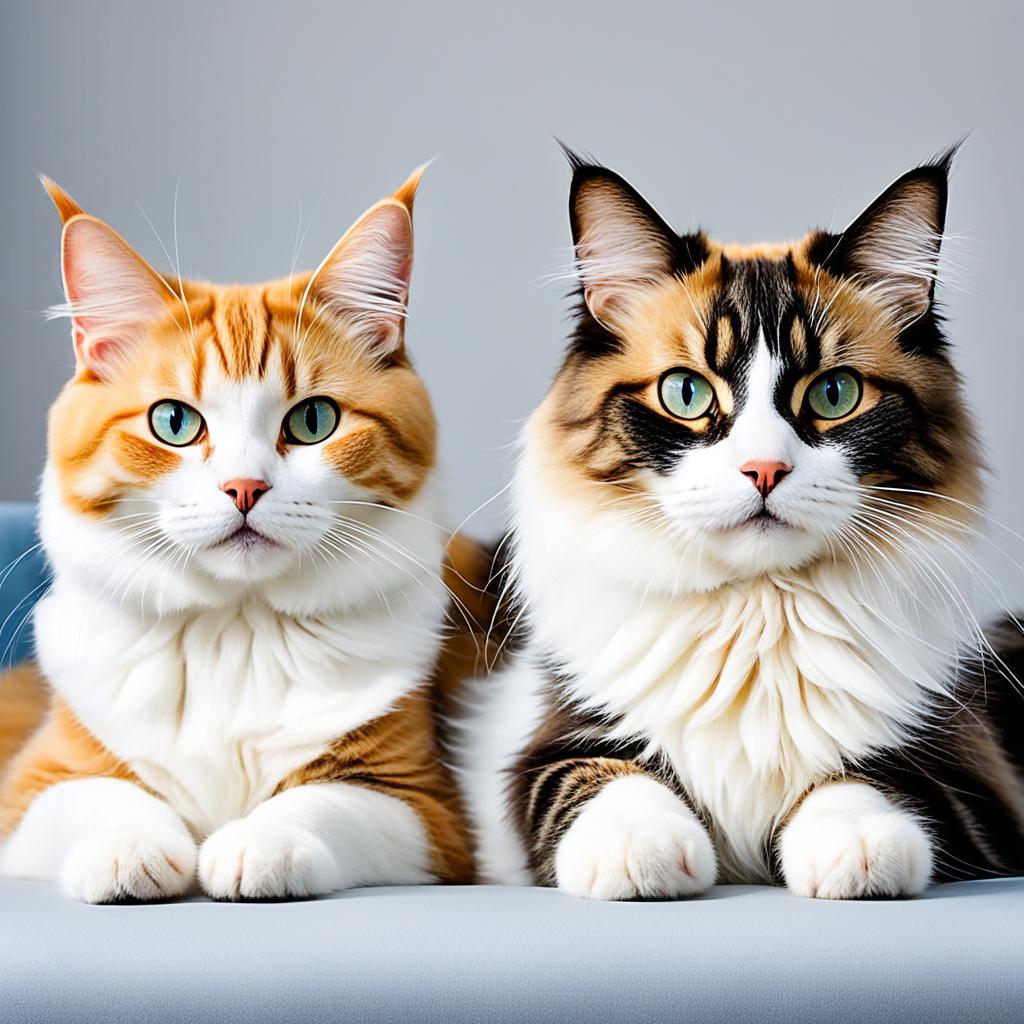
If you’re on the hunt for a unique feline companion, the Manx cat might just catch your fancy. Recognized for their *tailless* appearance, these cats have an abundance of characteristics that make them stand out from other breeds.
The Manx is often celebrated for its playful and social temperament. These cats love to engage with their human family members, making them a great fit for households seeking an interactive and loving pet. While they are not one of the hypoallergenic breeds, the Manx cat’s charm is irresistible for many.
Manx cats are available in various coat colors and patterns, adding to their allure. Their adaptable nature makes them suitable for a wide range of living situations. If you’re wondering are Manx cats hypoallergenic, the answer is no, but their other attributes often outweigh this concern for cat enthusiasts.
Choosing a cat breed for allergies might be challenging, but understanding the unique qualities of the Manx can help you make a well-informed decision. Despite their non-hypoallergenic status, their delightful personalities make them a beloved breed in many households.
History and Origin of Manx Cats

Manx cats, originating from the picturesque Isle of Man, have an intriguing and rich history dotted with folklore and maritime legends. This distinctive breed, noted for its unique lack of a tail, has been deeply embedded in the cultural fabric of the island since the 18th century. The Manx cat’s connection to this region is not just historical but also emblematic, reflecting the island’s maritime heritage and local mythology.
The Isle of Man Connection
Manx cats, often referred to locally as “stubbin,” are believed to have originated right on the Isle of Man. Their prominence in this region dates back centuries, to a time when their genetic mutation—leading to their taillessness—became a subject of fascination and folklore. Despite common misconceptions that these cats were naturally hypoallergenic breeds, their actual history denotes them as a vital part of Manx culture, deeply intertwined with tales of maritime adventures.
Legend and Mythology
Various legends surround the Manx cat, adding to their mystique. One popular tale narrates a story of a tailless cat swimming ashore to the Isle of Man following a maritime disaster. Another enduring myth involves Noah’s Ark, where it’s said that the Manx cat lost its tail when Noah hurriedly closed the ark’s door. Regardless of these mythical origins, the influence of the Manx cat extends well beyond local tales into global recognition. Formally acknowledged at the inaugural cat show in Great Britain and by the Cat Fanciers’ Association in 1906, Manx cats have maintained their role as iconic symbols on Isle of Man coins and stamps.
Their prominent role in history and enduring legends have contributed not only to their popularity but also to the understanding of Manx Cat health issues related to their taillessness. Whether you’re interested in them for their engaging lore or their striking physical traits, Manx cats continue to capture the imaginations of many, despite not being classified as hypoallergenic breeds.
Unique Physical Characteristics of Manx Cats
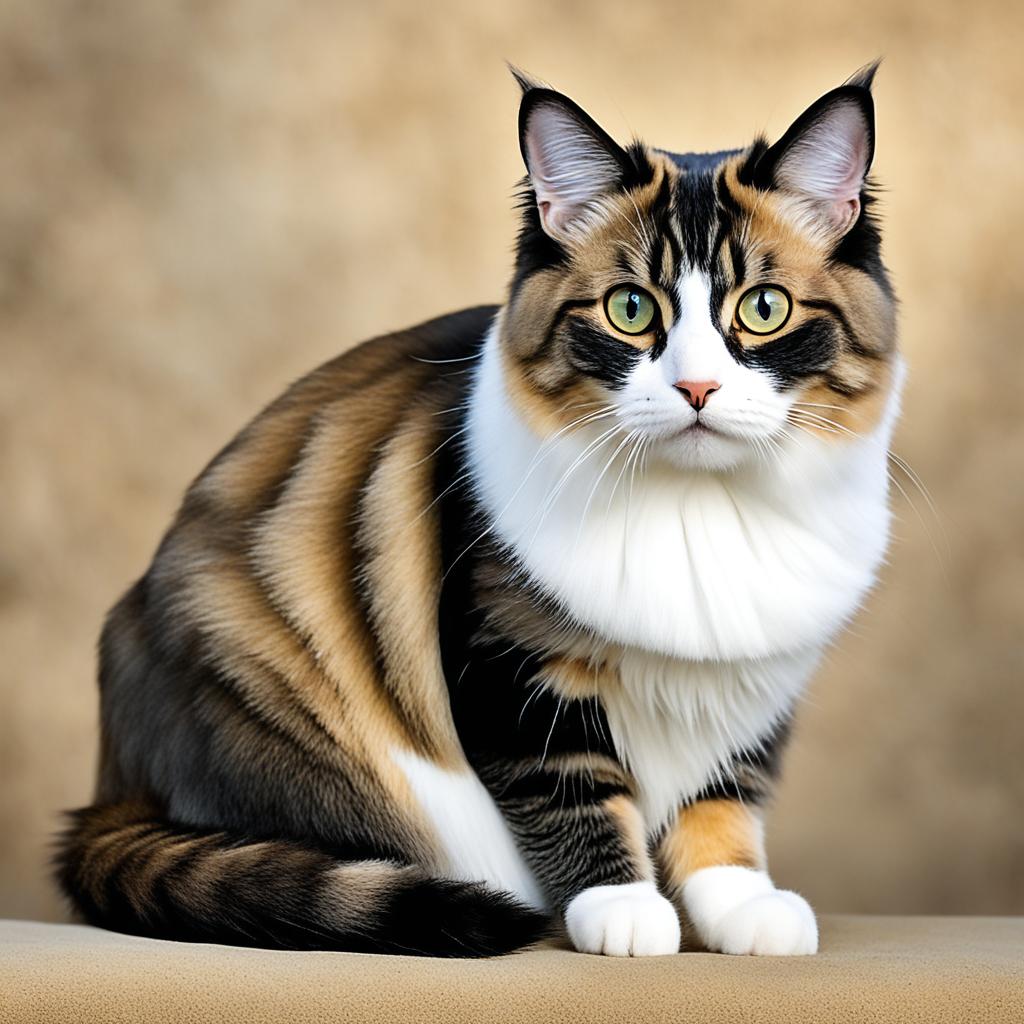
When it comes to the unique and intriguing Manx Cat Characteristics, their physical traits surely top the list. A significant factor in their allure is the striking variety in their tail lengths.
Tail Length Variations
Manx cats exhibit a fascinating range of tail lengths due to the dominant “M” gene. You’ve got the “rumpy” cats with no tails at all, and then the “rumpy risers,” flaunting just a slight tail stub. Isn’t that a delightful quirk?
Coat and Color Patterns
Another captivating feature of Manx cats is their coat and color patterns. They come in a myriad of colors, giving cat lovers numerous options to choose from. The hallmark of Manx Cat Characteristics is their plush, glossy double coat, available in both long and short versions. It’s like running your fingers through velvet!
Size and Build
The Manx Cat Characteristics extend to their build, which is nothing short of impressive. These cats are typically stocky, with full chests and sloping shoulders. And don’t miss those prominent hind legs, contributing to their distinctively rounded appearance.
Intrigued yet? Manx cats certainly bring a compelling blend of physical attributes to the table, making them a fascinating choice among Hypoallergenic Pets admirers.
Personality and Temperament

Manx cats are celebrated for their captivating personality and temperament. Their social and affectionate nature makes them endearing in any family setting, as these cats easily blend into households and shower their owners with affection.
Social and Affectionate Nature
Known for their amiable disposition, Manx cats are highly sociable. They form close bonds with their human companions, showing incredible loyalty. Whether snuggling on the couch or playfully following you around the house, these cats love being involved in family activities.
Playfulness and Energy Levels
The energy levels of a Manx cat are quite remarkable. Their playful and spirited nature ensures that there’s never a dull moment. These cats thrive on interactive playtime and mental stimulation, displaying a keen intelligence that makes them quick learners. Regular play sessions not only keep them entertained but also contribute positively to Manx Cat Health.
While their playful antics are delightful, you must also consider Allergies and Cat Hair. Managing allergies to cats becomes essential for families with sensitivities, and the energetic nature of Manx cats requires diligence in this regard. Regular grooming and creating a clean home environment can help mitigate allergy issues, ensuring both you and your furry friend enjoy a happy life together.
Are Manx Cats Hypoallergenic?
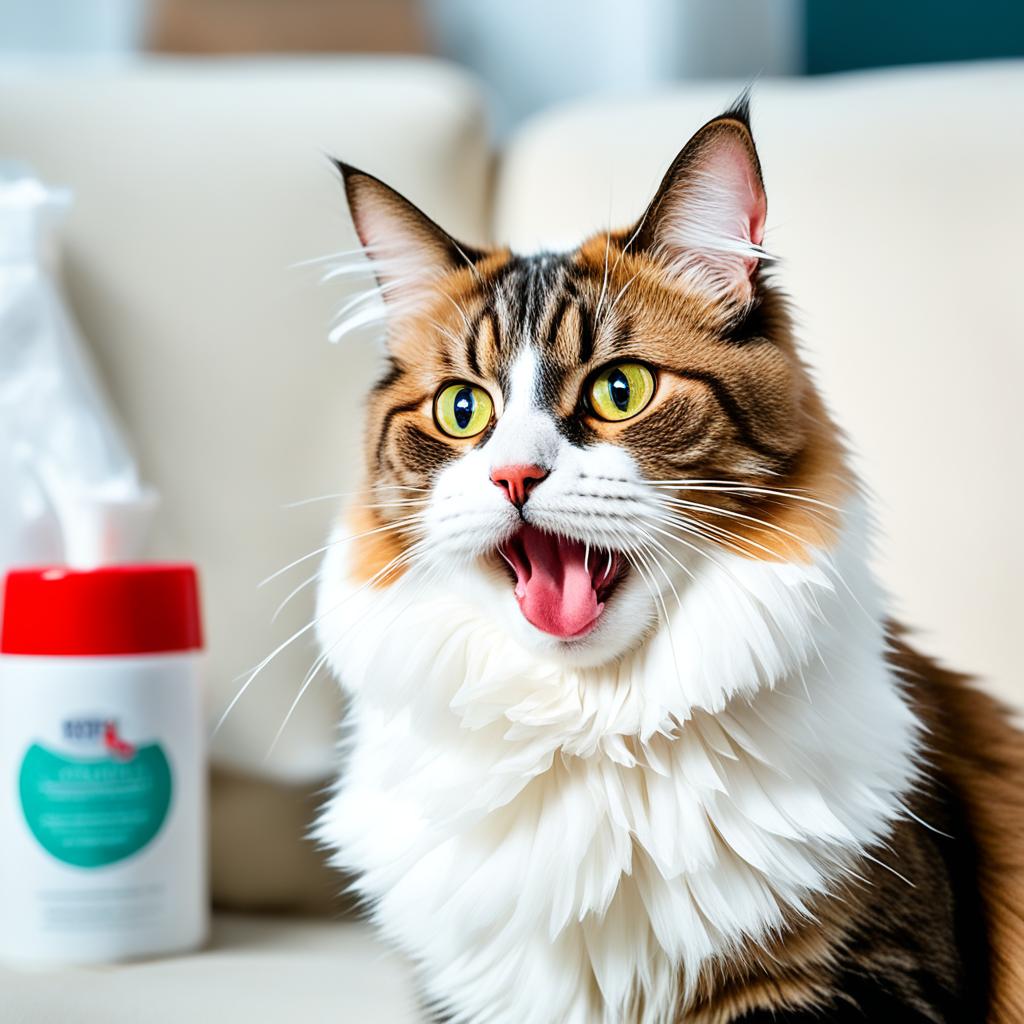
Manx cats, despite their charming appeal, are not hypoallergenic pets. You might feel inclined to think they shed less, but don’t be deceived by their sleek fur. Their double coats, which act as perfect insulators, shed predominantly during the spring and fall.
For those of you plagued by allergies to cat hair or dander, Manx cats might not be the best option among hypoallergenic pets. While they’re enchanting and affectionate, their shedding can spark those dreaded allergy symptoms. Looking for cat breeds for allergies? You may need to keep searching, as Manx cats bring a bit more to the table—mostly fur and dander.
When comparing different cat breeds for allergies, it’s essential to note that Manx cats and allergies simply don’t mix well. Their fur, although protective, contributes significantly to shedding, a common trigger for allergy flare-ups. Embrace the beauty of Manx cats, but remember, your allergies might not be as enthusiastic.
Manx Cats and Allergies
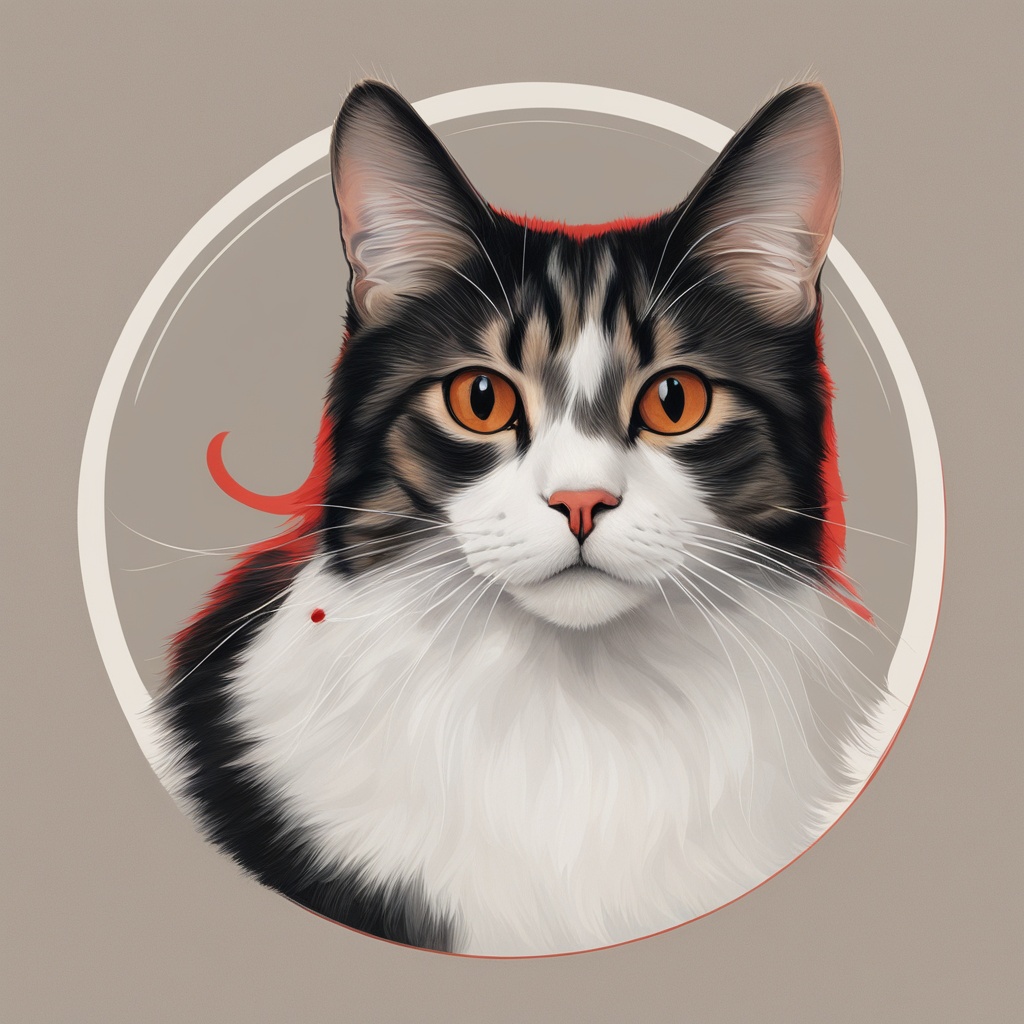
Manx cats, with their double-layered coats, are more prone to shedding, leading to the presence of pet dander in their living spaces. Despite their charming disposition, the shedding and dander can quickly become a challenge for those dealing with pet allergies.
Dander and Shedding
Yes, Manx cats shed, and this shedding releases dander into your environment. Dander, the tiny flecks of skin, can be a real culprit in triggering allergies. Even though Manx cats don’t shed excessively, their double-coated fur can deposit significant amounts of dander, making the question “Are Manx Cats Hypoallergenic?” quite relevant for prospective owners.
Managing Allergies
Managing allergies and cat hair doesn’t have to be a Herculean task. With regular grooming practices, such as daily or weekly brushing, you can significantly reduce the amount of dander and hair in your home. This isn’t just beneficial for allergy sufferers; it also keeps your Manx cat’s coat healthy and shiny. Additionally, creating a home environment that minimizes allergen accumulation can make a significant difference.
Here’s a quick table to help you better understand the strategies for managing allergies around Manx cats:
| Strategy | Benefits |
|---|---|
| Regular Brushing | Reduces shedding and dander |
| Frequent Cleaning | Minimizes allergens in the home |
| Air Purifiers | Filters out pet dander |
| Bathing Your Cat | Removes excess dander |
While Manx cats are not considered hypoallergenic pets, these measures can help manage allergies effectively. Balancing your love for these charming felines with smart housekeeping can ensure a harmonious living space for everyone involved.
Manx Cat Health Considerations
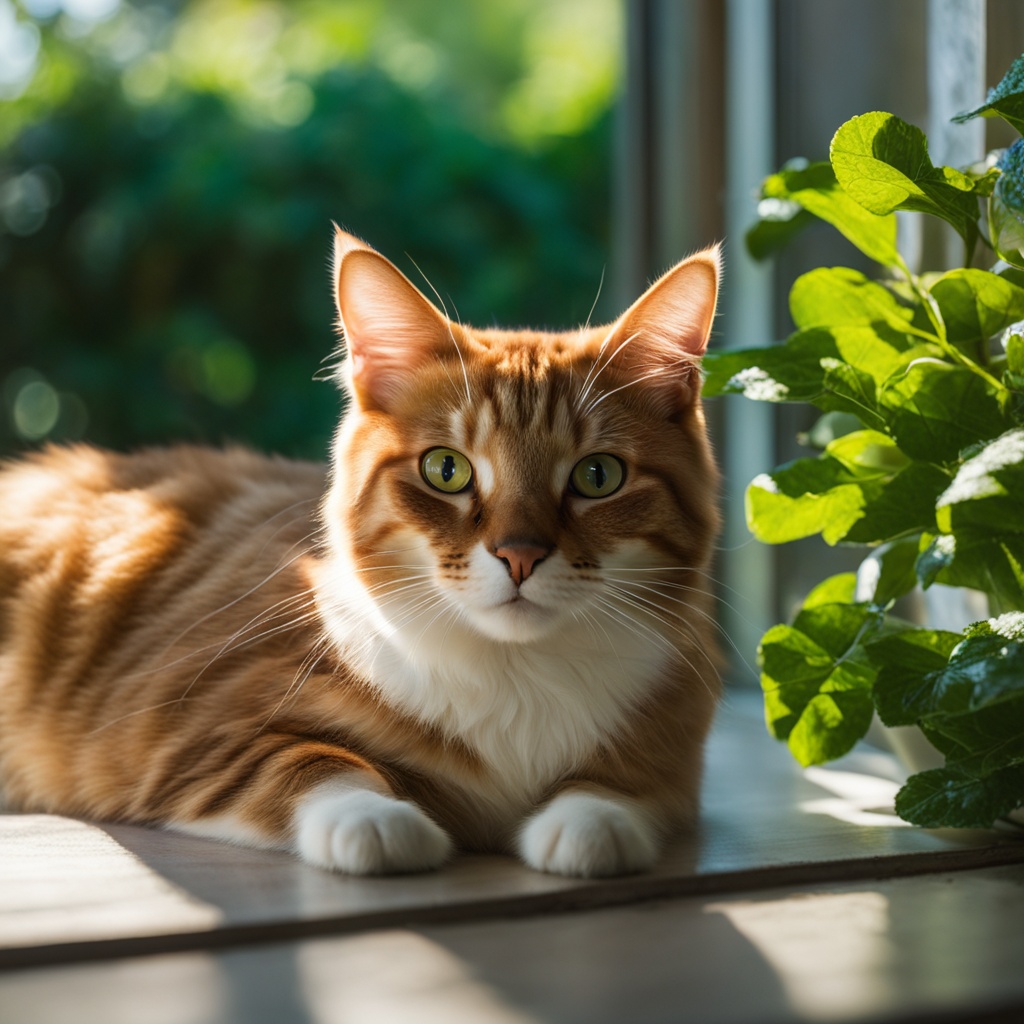
Manx cats, adored for their unique appearance, also come with specific health concerns that you should be aware of. While these beautiful felines can bring joy to any home, understanding their health needs is crucial in managing their well-being effectively.
Common Health Issues
Manx cats are prone to several health issues, many of which are interconnected with their distinctive tailless trait. Key concerns for Manx Cat Health include spinal bifida, arthritis, and partial paralysis. These problems arise due to the genetic mutations responsible for their taillessness, leading to complications that may affect their quality of life. Regular veterinary check-ups can help in the early detection and management of these issues.
Manx Syndrome
Manx Syndrome is the top health issue specific to this breed. This condition can present severe symptoms such as incontinence and spinal cord dysfunction. Sadly, there isn’t a cure for Manx Syndrome, but some surgical interventions may occasionally provide relief. Keeping a close eye on your cat’s health and having open communication with your vet can significantly impact how you manage these symptoms. Being equipped with knowledge about Managing Allergies to Cats can also aid in creating a healthier living environment for allergic family members.
Grooming and Care Requirements
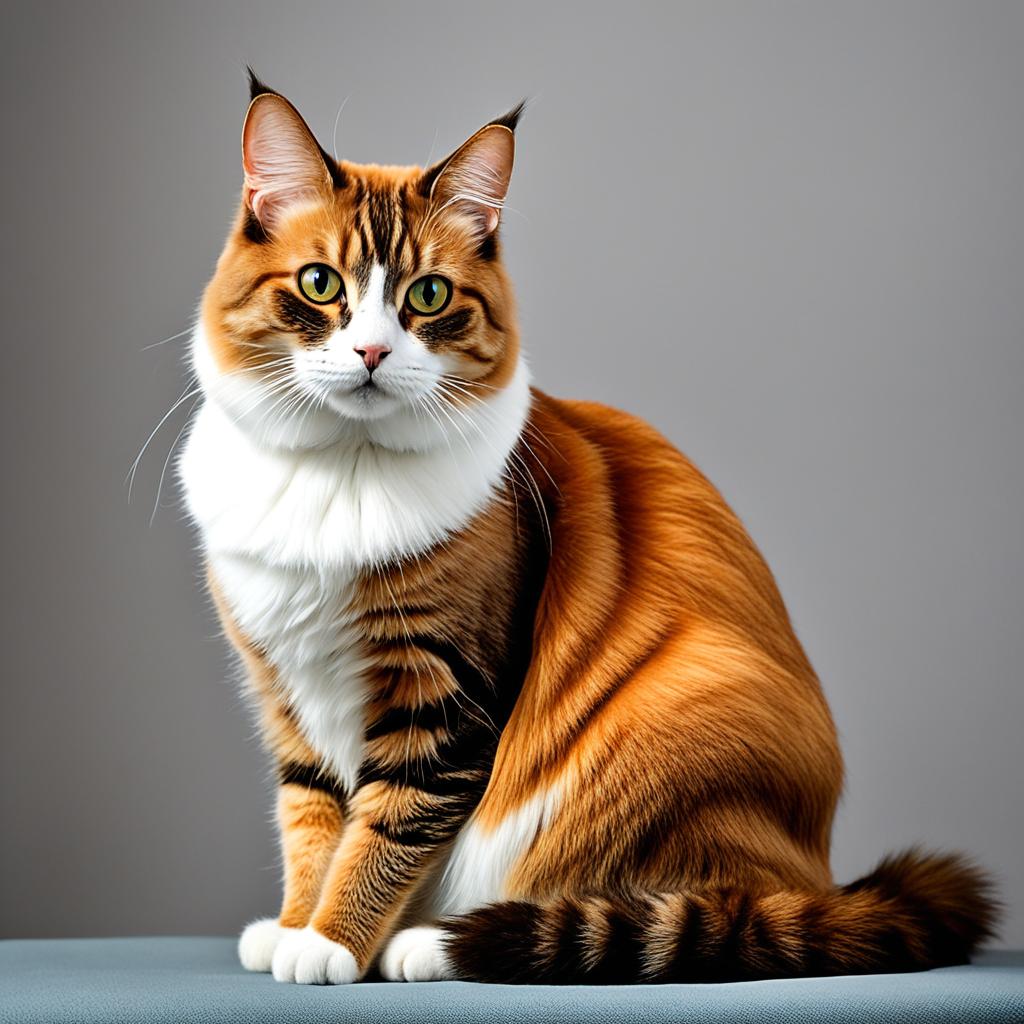
Caring for a Manx cat encompasses more than just basic hygiene – it’s about fostering both their beauty and health. A consistent grooming routine is essential to manage their luxurious double coats and keep shedding at bay.
Coat Maintenance
Manx cat characteristics include a dense double coat that requires regular attention. Ensuring your Manx is groomed properly enhances their well-being and helps reduce allergens, perfect for those who adore Hypoallergenic Pets but need to be cautious with hypoallergenic breeds. Long-haired Manx, in particular, need more intensive care to prevent matting and tangling.
Brushing and Shedding Control
Routine brushing not only diminishes the shedding issue but also reinforces the bond between you and your feline friend. With regular brushing, you can reduce dander accumulation, making your home a more suitable environment even for those wary of non-hypoallergenic breeds. Remember, no grooming session is complete without showing your furry friend some post-session affection!
| Grooming Tasks | Frequency | Tools Needed |
|---|---|---|
| Brushing | Weekly for short-haired, Daily for long-haired | Pet brush, Comb |
| Bathing | Every 4-6 weeks | Cat shampoo, Towel |
| Claw Trimming | Every 2-3 weeks | Claw trimmer |
| Ear Cleaning | Monthly | Cat ear cleaner, Cotton balls |
By understanding and meeting the grooming needs of your Manx, you’ll help maintain their distinctive charm, while also navigating the allergies some pet owners might encounter. Regular grooming translates to a happy, healthy, and less allergenic household – truly a win-win situation for everyone!
Exercise Needs and Playtime
Manx cats are energetic and playful creatures that thrive on regular exercise. To keep your Manx cat happy and healthy, it’s essential to engage them in at least 30 to 60 minutes of daily playtime. This not only satisfies their physical needs but also stimulates their mental faculties.
Toys and Activities
When it comes to toys, Manx cats have a natural hunting instinct that can be sparked by toys mimicking prey movements. From feather wands to laser pointers, there are various ways to entertain your feline friend. These activities not only keep them active but also help in managing any potential allergies and cat hair in your living space by reducing shedding through vigorous play.
Indoor vs. Outdoor Exercise
Another factor to consider is whether to provide indoor or outdoor exercise opportunities. While indoor play can be facilitated through interactive toys and climbing structures, outdoor exercise gives Manx cats the chance to explore and indulge their curiosity. Be mindful of their safety, and ensure any outdoor space is secure. Combining both indoor and outdoor activities can be beneficial, addressing their need for hypoallergenic pets by keeping them well-exercised and less prone to stress build-up.
Ultimately, a well-exercised Manx cat is less likely to develop behavioral issues and more likely to be a joy in your household. Remember, regular exercise isn’t just about burning energy; it’s also about nurturing a happy, healthy companion while managing Manx cats and allergies.
Diet and Nutrition for Manx Cats

Ensuring your Manx cat maintains optimal health begins with a well-balanced diet. Observing the intricacies of their nutritional needs will support their dense coat and lively nature.
Essential Nutrients
Manx cat health relies heavily on a diet rich in high-quality protein sources, vitamins, minerals, fats, and ample hydration. The inclusion of fish oils and omega-3 fatty acids can greatly benefit their overall well-being, supporting both coat health and cognitive function. Regular veterinary check-ups are crucial to monitor and tailor dietary plans according to individual needs.
Wet vs. Dry Food
Choosing between wet and dry food can have a significant impact on your Manx cat’s health. Wet food offers hydration benefits, which is particularly beneficial for urinary health, while dry food supports dental hygiene. Ideally, incorporating both into their diet can help in balancing these benefits. It’s important to note that cow’s milk should be avoided as it can lead to digestive issues for your furry companion.
| Food Type | Benefits | Considerations |
|---|---|---|
| Wet Food |
|
|
| Dry Food |
|
|
Overall, the diet and nutrition for Manx cats should be designed with their specific needs in mind, considering factors like their coat health, activity level, and potential allergies to cat hair. Balancing these components will ensure a holistic approach to maintaining Manx cat health.
Finding a Manx Cat
If you’re intrigued by these playful and affectionate felines, finding a Manx cat involves some investigation. While they are wonderful companions, prospective owners should consider whether the breed suits their lifestyle, particularly if allergies to cat hair or dander are a concern. Although Manx cats and allergies might not be the best combination, the charm of these cats encourages many to take the plunge.
Breeders and Adoption
When looking for a Manx, you can explore options such as reputable breeders, shelters, or adoption agencies. Breeders often offer purebred Manx kittens, with prices typically ranging from $150 to $500. Additionally, you might come across Cymric Manx, the long-haired variant, adding another layer of decision-making to your search for the perfect feline friend.
Considerations Before Bringing Home a Manx Cat
Before making the final decision, it’s essential to conduct thorough research on hypoallergenic pets and understand that Manx cats and allergies can be tricky to manage. Engage in consultations about the breed, particularly their health issues. The unique physical characteristics and health concerns of Manx cats require dedicated care and attention, making it vital for potential owners to be well-prepared.
| Finding a Manx Cat | Details |
|---|---|
| Price Range | $150 – $500 |
| Sources | Breeders, Shelters, Adoption Agencies |
| Varieties | Cymric Manx (Long-haired) |
| Important Considerations | Health Issues, Manx Cats and Allergies |
Conclusion
Welcoming a Manx cat into your home means embracing a world of charm and companionship. With their dog-like loyalty, playful nature, and fascinating history, Manx cats hold a special spot in the hearts of many cat enthusiasts. However, let’s address the elephant in the room: Are Manx cats hypoallergenic? The short answer is no. Despite their unique characteristics, they are not part of the hypoallergenic breeds. This means if you’re managing allergies to cats, the Manx might require some extra effort in grooming and cleaning routines.
Before bringing a Manx into your family, it’s crucial to understand the specific needs and considerations this breed demands. From their potential health issues, such as Manx Syndrome, to their grooming needs due to the dense double coat, becoming a Manx cat owner requires a bit more dedication. But for those who don’t mind the added attention to grooming or the occasional health check-up, the Manx offers unmatched companionship and delight.
In the end, while the Manx cat may not tick all the boxes for hypoallergenic pets, their perks far outweigh the extra care they might need. Their affectionate personalities, along with intriguing legends and diverse physical traits, make them a beloved choice despite their lack of hypoallergenic status. If you’re willing to manage the grooming and health aspects, you’ll find the Manx to be a loyal, playful, and genuinely delightful addition to your home.




